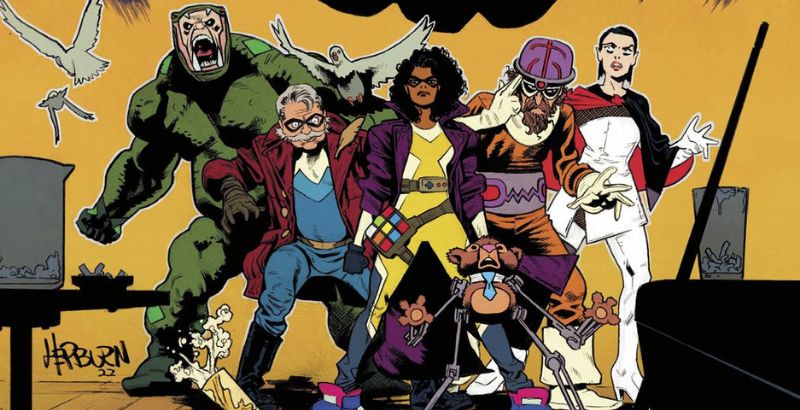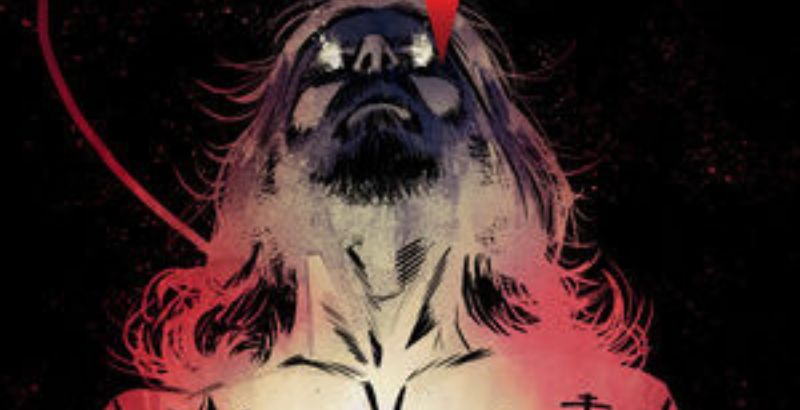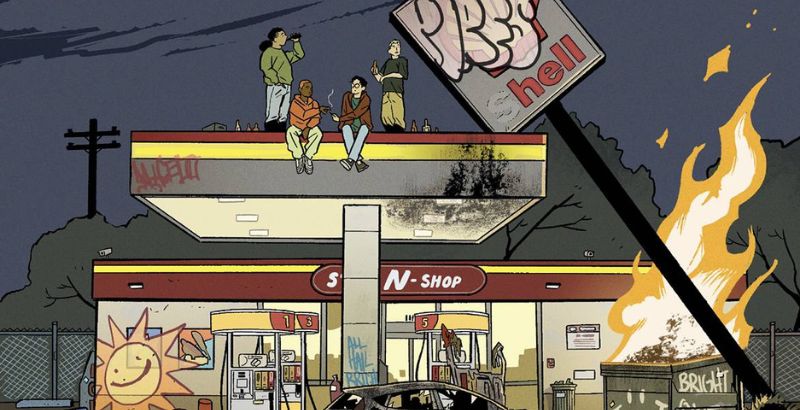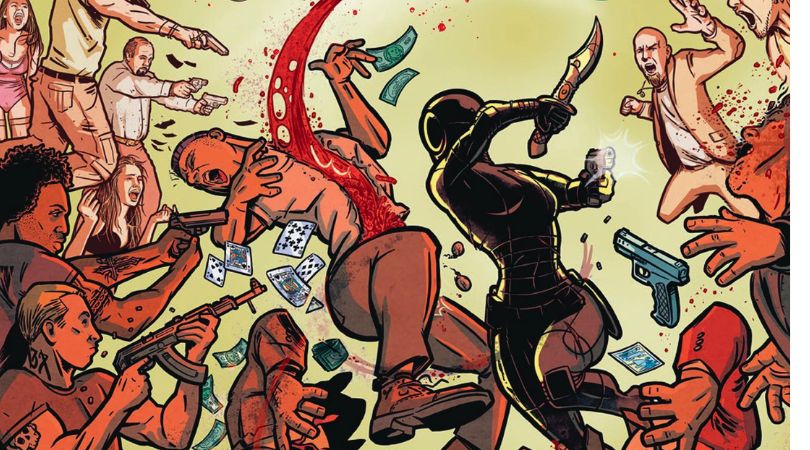
Minor Threats #1 is written by Patton Oswalt and Jordan Blum, illustrated by Scott Hepburn, colored by Ian Herring, and lettered by Blambot’s Nate Piekos. It’s published by Dark Horse Comics. Frankie Follis was once the supervillain known as Playtime, using her metahuman intellect to build toy-shaped weaponry. Now she’s attempting to go straight, bartending at the Lower Lair, which happens to be a magnet for lower-level supervillains. However, Frankie’s life is upended when Kid Dusk, the sidekick to the hero known as Insomniac, is brutally murdered by the insane Stickman. When the members of the superhero team known as the Continuum ransack Twilight City, Frankie gathers her patrons and decides to hunt down Stickman herself.
It’s no secret that Oswalt is a huge comic book fan. Not only has he been part of comic book shows like The Sandman and M.O.D.O.K.—even serving as co-showrunner of the latter with Blum—but he’s also written comics, including a story in Dark Horse’s Black Hammer universe. Every bit of this comic book fandom is present in Minor Threats, which helps Oswalt and Blum put a spin on well-worn tropes. A key example features Frankie ruminating on the “rules” of the superhero world. Even though superheroes and supervillains engage in battle, they stick to their roles. But Kid Dusk’s death upended that. “Everything was broken,” a narrative caption reads, hinting at the chaos to come.
Another element that Oswalt and Blum handle wonderfully is the tone. All of the villains in the Lower Lair are ridiculous, for lack of a better term. Scalpel is a former surgeon who stitches up members of the mob and, according to Frankie, has an ego to rival Emma Frost’s. Pigeon Pete throws bombs that explode…into pigeons. And Brain Tease is an even sadder version of the Riddler. Yet they aren’t afraid to touch on the emotional side of things, especially when it comes to Frankie. She can only hold down a bartending job due to her supervillain past, and she’s striving to try and be someone her daughter can be proud of, not to mention her own fractured relationship with her mother. It’s that added element that really makes the book stand out.
What else makes the comic a standout is the art from Hepburn and Herring. Hepburn, having previously illustrated Deadpool, brings the same sense of animated chaos that followed his tenure on the Merc with a Mouth’s title. In addition, each of the supervillains in the title has a unique element to their costume, whether it’s Brain Tease’s brain-shaped helmet or the array of toys lining Playtime’s belt. The Continuum members also have a similar style, which helps them stand out from the millions of ersatz Justice League/Avengers clones. Herring’s colors are bright and eye-popping, which is not only a far cry from the blue language and adult themes peppering the comic but helps sell its superhero elements. Combined with Piekos’s classically styled lettering, this book wouldn’t feel out of place in the Silver Age.
Minor Threats #1 launches a delightfully dark new superhero universe, merging Silver Age aesthetics with a modern-day plot. It looks set to follow in the footsteps of Dark Horse’s other offbeat fare, such as The Umbrella Academy and Black Hammer, and to be honest; we need more of that if the genre’s going to thrive. So definitely add this book to your reading pile; you’ll laugh, maybe cry, and have a great time.
Minor Threats #1 is available wherever comics are sold.
Minor Threats #1
TL;DR
Minor Threats #1 launches a delightfully dark new superhero universe, merging Silver Age aesthetics with a modern-day plot.







